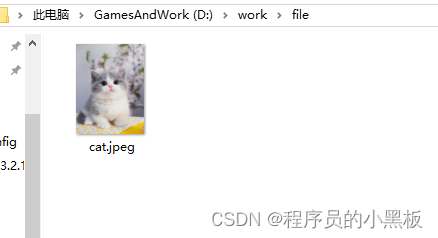前言
在我们的日常开发过程中,经常使用nginx做文件读取服务器,因为配置非常简单,方便使用。只要通过IP和端口加上文件路径就可以读到文件或者图片了。但是,我们的安全问题该如何处理?并不是所有的人拿到图片路径就可以访问文件,这样很有可能造成文件泄露。
因此,我们想的是,在通过路径获取文件的时候,可以携带token信息,通过我们的系统服务进行token验证,如果token合法,才能成功获取图片,否则拒绝此次请求。
以下是具体的实现方式,通过Nginx的auth_request模块:
1.配置Nginx静态服务器
下载nginx,解压之后,打开conf文件夹下面的nginx.conf
设置静态文件路径,然后在根目录执行nginx启动,静态文件服务器就可以使用了
server {
listen 8088;
server_name 127.0.0.1;
#charset koi8-r;
#access_log logs/host.access.log main;
location / {
alias D:/work/file/;
index index.html index.htm;
}
#error_page 404 /404.html;
# redirect server error pages to the static page /50x.html
#
error_page 500 502 503 504 /50x.html;
location = /50x.html {
root html;
}
# proxy the PHP scripts to Apache listening on 127.0.0.1:80
#
#location ~ .php$ {
# proxy_pass http://127.0.0.1;
#}
# pass the PHP scripts to FastCGI server listening on 127.0.0.1:9000
#
#location ~ .php$ {
# root html;
# fastcgi_pass 127.0.0.1:9000;
# fastcgi_index index.php;
# fastcgi_param SCRIPT_FILENAME /scripts$fastcgi_script_name;
# include fastcgi_params;
#}
# deny access to .htaccess files, if Apache's document root
# concurs with nginx's one
#
#location ~ /.ht {
# deny all;
#}
}

文件夹下放了一张图片,我们打开浏览器,输入http://127.0.0.1/cat.jpeg就可以访问到了


2.编写后台授权接口
正常我们都是通过hearder中携带授权token信息,所以我们后台写个接口,通过HttpServletRequest获取header中的token信息,再进行业务的验证就可以了,auth_request模块是根据返回的http状态值来判断是否通过授权,200则为成功,401或者403为授权失败
@RequestMapping("/authFileValid")
@ResponseBody
public void authFileValid(HttpServletRequest request,HttpServletResponse response){
String token = request.getHeader("accessToken");
System.out.println("获取的token:"+token);
if(token != null){
//验证token是否合法
}else{
response.setStatus(HttpStatus.UNAUTHORIZED.value());
}
}
3.修改nginx配置文件
server {
listen 8088;
server_name 127.0.0.1;
#charset koi8-r;
#access_log logs/host.access.log main;
location / {
alias D:/work/file/;
# 设置鉴权的请求
auth_request /authFileValid;
# 从查询参数中获取 token,并赋值给token变量
set $token $arg_token;
# 自定义验证失败时的处理页面
error_page 401 = /auth-required;
}
location = /authFileValid {
internal; # 只允许内部访问
proxy_pass http://127.0.0.1:8080/authFileValid;
proxy_pass_request_body off;
proxy_set_header Content-Length "";
proxy_set_header X-Original-URI $request_uri;
# 设置AccessToken 的值为token
proxy_set_header AccessToken "$token";
}
location = /auth-required {
return 401; # 返回 401 状态码
}
#error_page 404 /404.html;
# redirect server error pages to the static page /50x.html
#
error_page 500 502 503 504 /50x.html;
location = /50x.html {
root html;
}
# proxy the PHP scripts to Apache listening on 127.0.0.1:80
#
#location ~ .php$ {
# proxy_pass http://127.0.0.1;
#}
# pass the PHP scripts to FastCGI server listening on 127.0.0.1:9000
#
#location ~ .php$ {
# root html;
# fastcgi_pass 127.0.0.1:9000;
# fastcgi_index index.php;
# fastcgi_param SCRIPT_FILENAME /scripts$fastcgi_script_name;
# include fastcgi_params;
#}
# deny access to .htaccess files, if Apache's document root
# concurs with nginx's one
#
#location ~ /.ht {
# deny all;
#}
}
注意:
set $token $arg_token中的arg_是参数前缀固定写法,实则是获取的查询参数中的token值
例如http://127.0.0.1:8088/cat.jpeg?token=xxxxx
4.测试
重新启动nginx,启动后台web,浏览器访问http://127.0.0.1:8088/cat.jpeg,就可以看到下面的结果了
- 前端:

- 后台:

我们可以看到,再次访问图片返回了401,这时候我们已经没有权限去访问图片了
这次我们随便设置一下token值,后台并没有进行验证token的正确性,便于测试只是验证了非空
- 前端:

- 后端:

如此我们便实现了nginx调用后台接口授权的整个流程、
总结
以上为个人经验,希望能给大家一个参考,也希望大家多多支持IT俱乐部。

